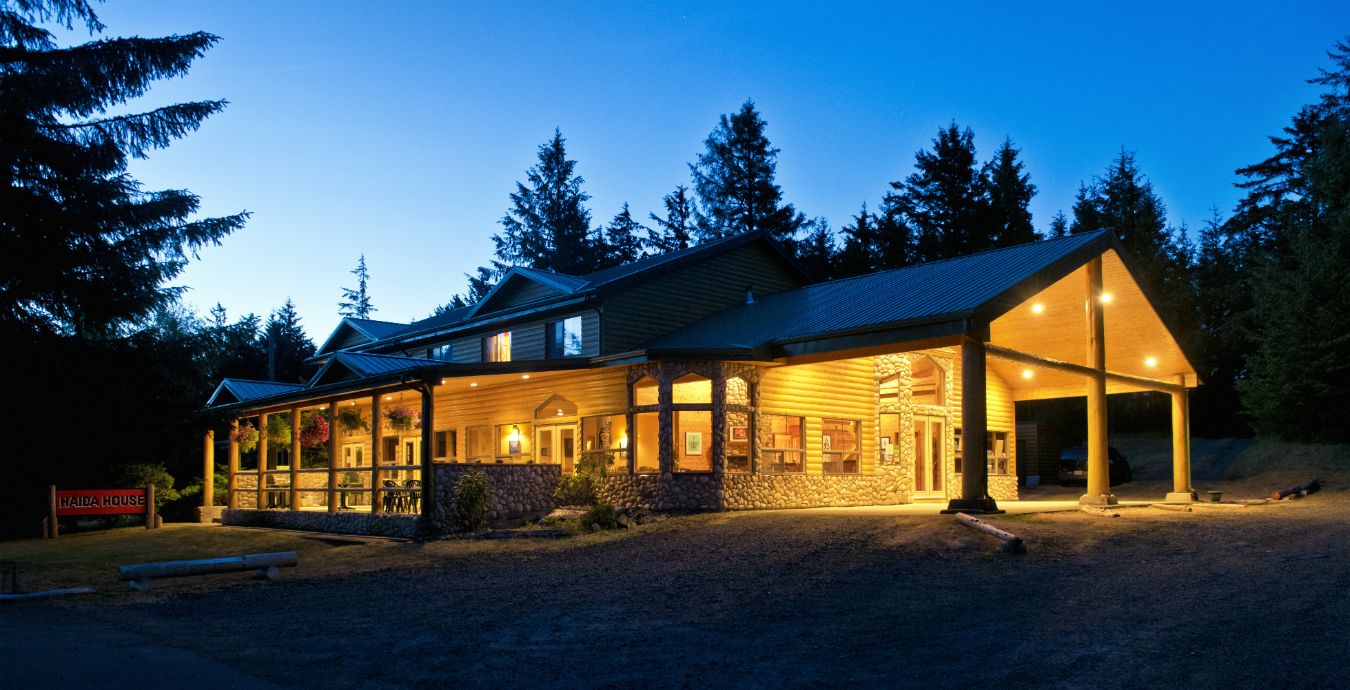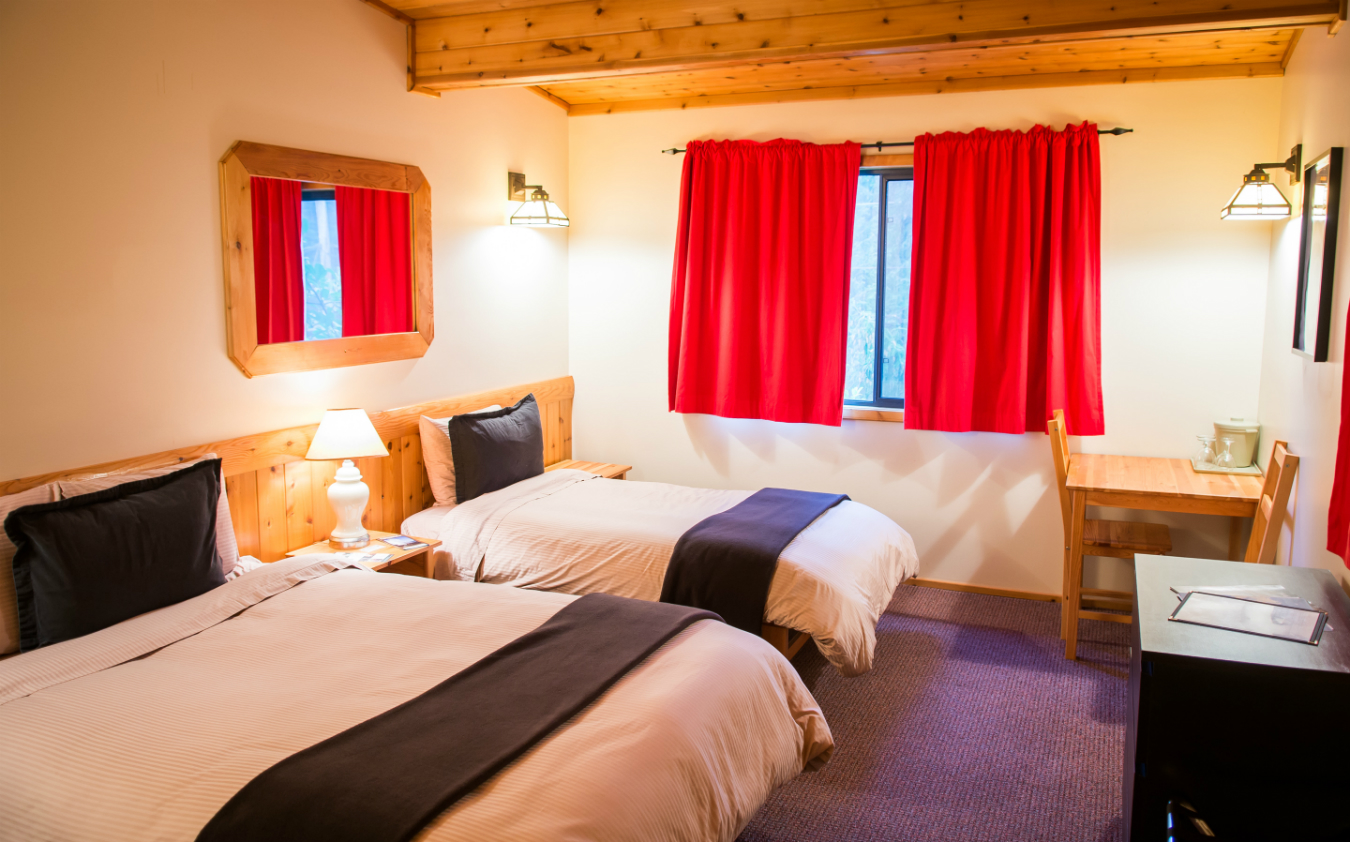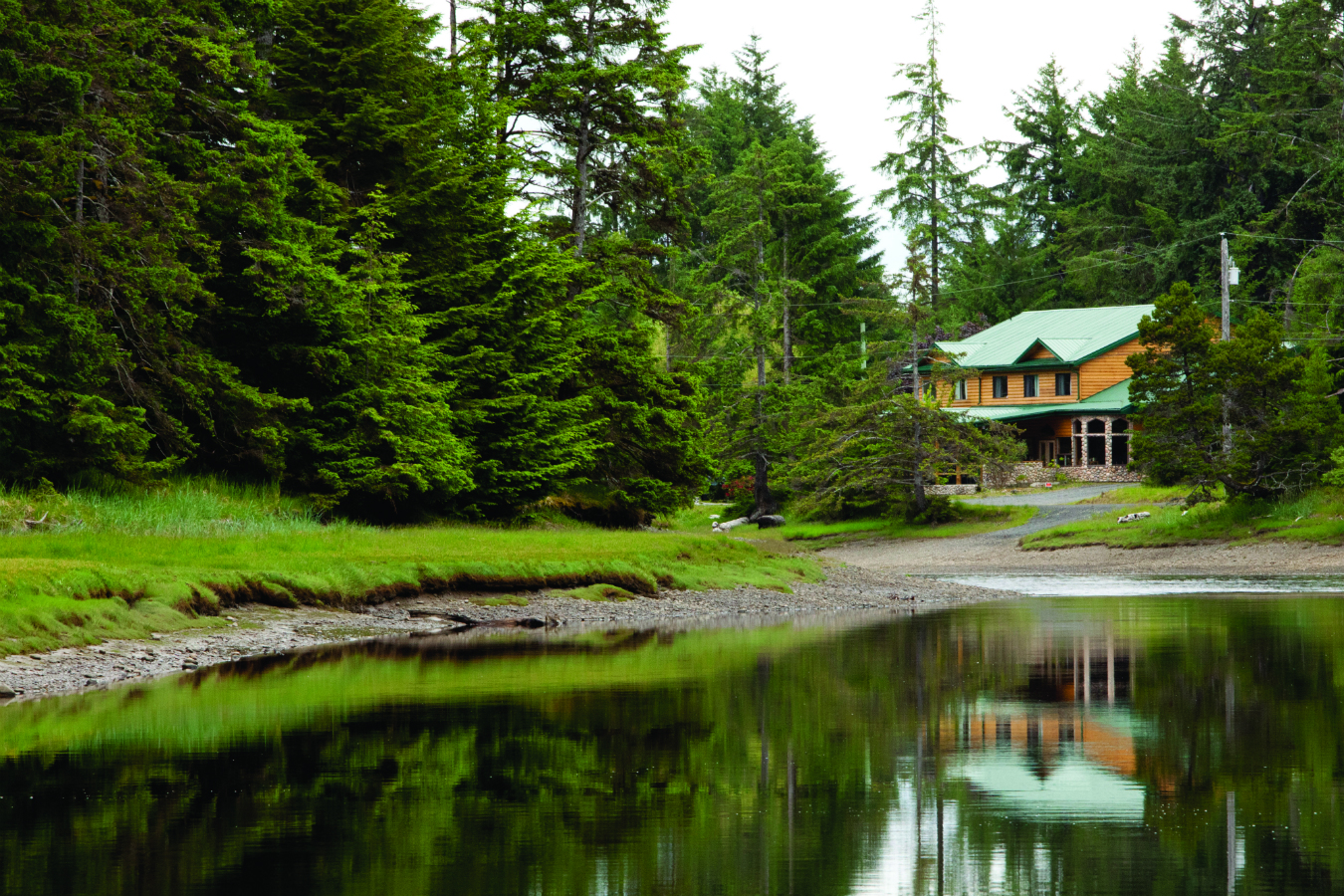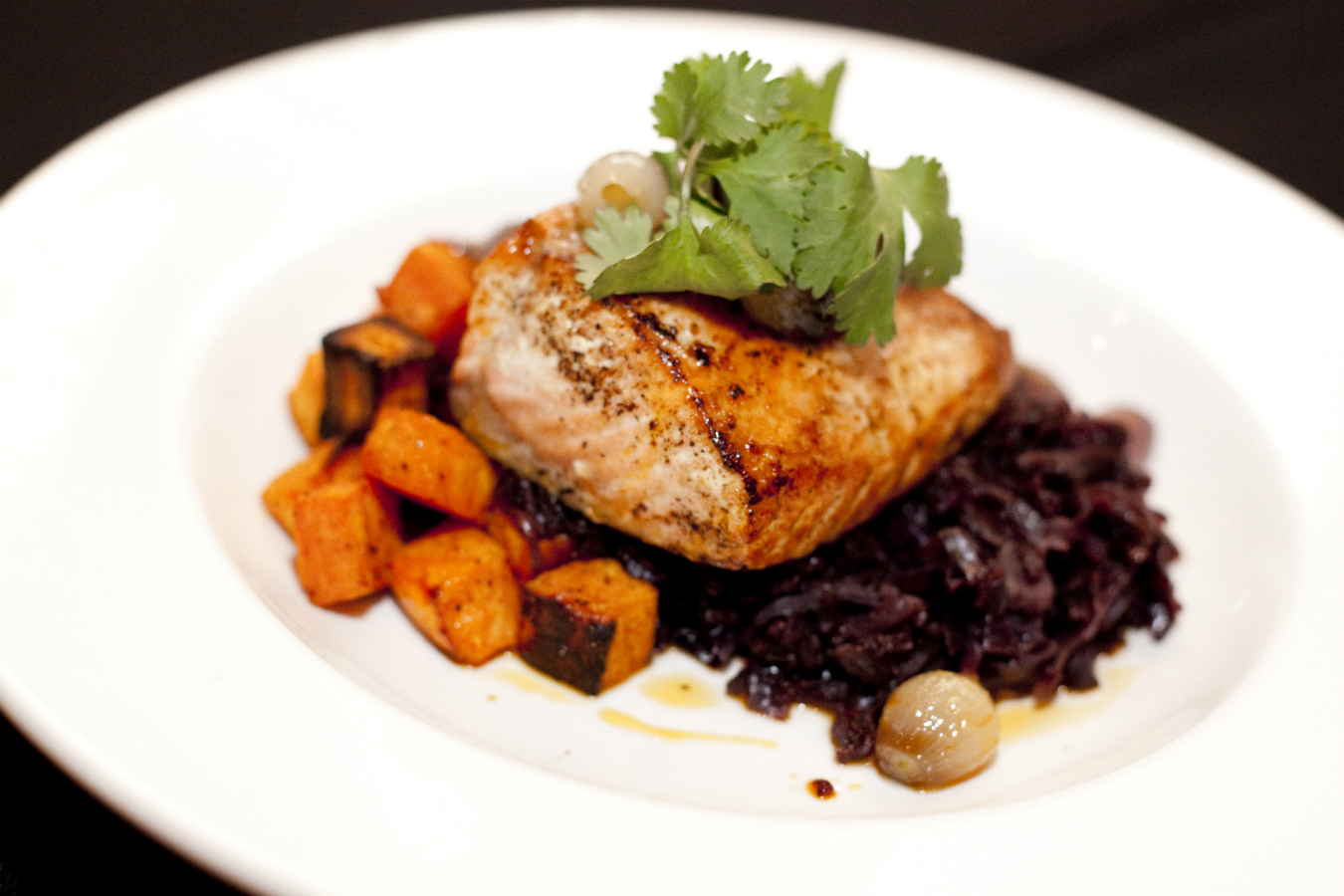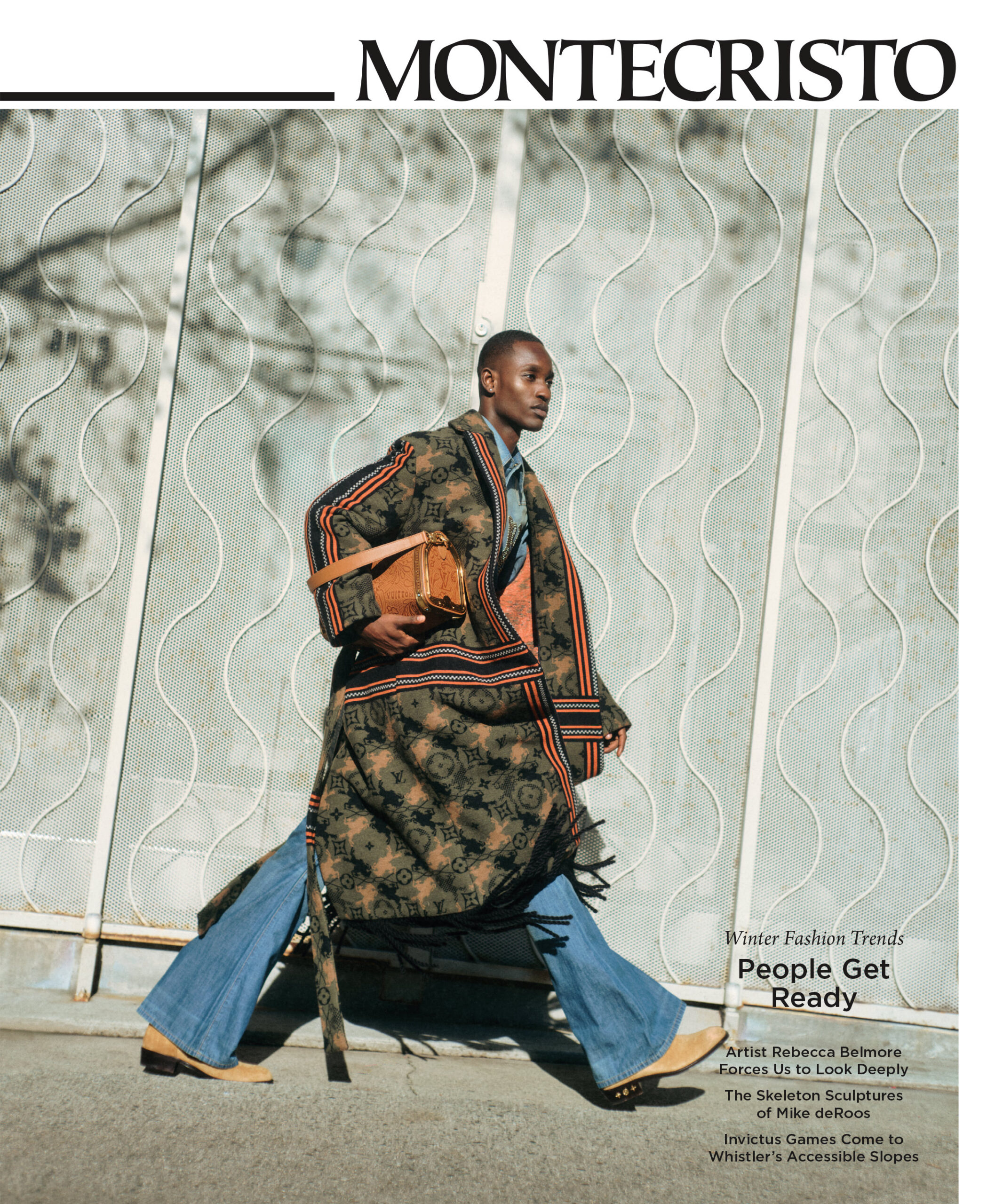When the Council of the Haida Nation approached Joelle Rabu five years ago to take over a former trophy bear hunting lodge in Tllaal on Haida Gwaii, and turn it into something useful for the community, she packed her bags and moved to the remote archipelago off of British Columbia’s Northwest Coast. She is now general manager of what is known as the Haida House, a cultural tourism lodge specializing in organized packages that take visitors all over the historic Graham Island.
Haida House is modest, quiet, welcoming. There is no cell service, but there is plenty of delicious food at the in-house restaurant; there is no television, but there is the warmth of those who work there (and 98 per cent of the lodge’s employees are Haida). By pairing each group of tourists with a cultural ambassador from the Haida Nation, Haida House brings the history and heritage of the land to the forefront, allowing visitors to understand, and therefore respect, where they are.
Here, Rabu—a magnificent force of a woman who, if you’re lucky, will sing a few lines of an Edith Piaf song in perfect pitch—discusses tourism, travel, and balance.
What has it been like to see the Haida House grow?
The evolution of the Haida House has been very interesting. It started out in June of 2012 with 94 bed nights booked, and by the end of the season, at the end of mid-September, we had 500 bed nights. And it was like, “Wow! We’re on a roll!” Well, now over year five, we’re well over 1,900 bed nights. I’ve been very interested in being able to create a business where we are creating opportunities, skills, and development in tourism—because on Haida Gwaii, there really isn’t a lot to draw from. There aren’t any Fairmonts or Holiday Inns. Everything’s mom-and-pop-operated, therefore there aren’t a lot of opportunities to learn a business—unless you own it. So the Haida House developed into being a learning centre for the hospitality and tourism industry.
What is your background in the industry?
I was born in Manitoba, on the Red River, and perhaps that is why I have an affinity for the Tllaal River [on which the Haida House sits]. As soon as I saw this, I fell in love. I left Manitoba when I was a teen, and lived the majority of my life on Vancouver Island. I cut my teeth in the business at my family’s resort on Vancouver Island, and I also went around the world for three years and learned a lot about the tourism industry in different countries: New Zealand, Australia, Japan.
This job brought you to Haida Gwaii. What has kept you here?
Everything has kept me here. There’s something different about Haida Gwaii. It’s just slower, and quieter, and more down to earth. There’s a spiritual connection to the environment and to the people. The Haida are an amazing people: strong. They have fought for centuries. They first started by fighting for their health when smallpox was introduced; they fought for their trees when lumber was being chopped down; they fought for their identity when the residential schools came in and took away their culture, their language, their names; and how they’re fighting for their waters, to stop the tankers from having an oil spill destroy their way of life, which is their food source. As soon as you take away the language, the food, the art in a culture, you lose a culture. You lose it. You have to have those three things in order to maintain a culture. Otherwise you are just a person on a map.
Why is it important to educate Haida Gwaii tourists about Haida culture?
Tourism in itself is a very interesting box. It can be the tourism destination where you arrive at the airport and the people are dancing and putting leis around your head, and you go, “Wow, I’ve just arrived here and I’m really soaking in with the natives!” And then you get CNN in your room, and you get The New York Times at the front desk, you get your bacon and eggs the way you like your bacon and eggs—that’s one side of tourism.
There’s the other side of tourism, which is the cultural tourism, and is for the person who just wants to go and say, “I don’t know what I’m expecting.” And you’re introduced to the people, to the locals, and to nature, and something happens. Because we’re only once here on the planet, we’ve only got one shot on this planet. And to look at things lightly and with a veneer or through the lens of a camera or the lens of a machine that says, “This is what you saw today,” and then Photoshop it to enrich it—there’s something innately wrong with all that for me. It just is wrong. I think that what we need to see is what’s in front of us: take it in, bring it back at night, and just go, “What did I do today? What did I see? What did I really see and learn?”
Haida Gwaii is still so new to tourism, and keeping the environment pristine is obviously crucial. It is hard to strike the balance between wanting people to come here and keeping the place intact?
Striking a balance in anything is very difficult because we’re all human. We all see things differently. You want to give proper paying jobs, sustainable jobs, you want to limit your footprint, you want to make it the least resource-extracting as possible. So yeah, it is hard. But I think it’s doable.
Is there anything else you would like to add?
I’m surrounded by magnificent people. That’s the only reason it’s a successful entity here. My question to you would be: how was your stay on Haida Gwaii?
This interview has been edited and condensed.
Read more stories from British Columbia here.
